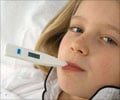Analysis has shown that Lamictal (lamotrigine) could be used as an additional treatment for the treatment of generalized tonic-clonic seizures.
Researchers have shown the effectiveness of Lamictal (lamotrigine) as additional treatment method in children and young people with primary generalized tonic-clonic (PGTC) seizures.
According to the latest issue of the journal Paediatrics, lamotrigine (LAMICTAL) has been demonstrated to be effective as an additional therapy for the treatment of Primary Generalized Tonic-Clonic (PGTC) seizures, in children and adolescents. It was explained that this research analysis is the first published data from a random, double blind, controlled clinical trial of PGTC seizures mainly concentrating on patients between the age group of 2 to 20 years. It was explained that 1C PGTC seizures, which are commonly know as "grand mal" seizures, are the most common form of generalized seizures, that occur in approximately 20% of patients with epilepsy. It was also mentioned that Lamictal is not presently indicated for the treatment of PGTC seizures.'PGTC seizures are more common in children than in adults, and are associated with increased risk of injury or death,' said Edwin Trevathan, M.D., M.P.H., Director of the Division of Paediatric and Developmental Neurology at Washington University School of Medicine and Neurologist-in-Chief, St. Louis Children's Hospital, St. Louis, MO, key investigator of the clinical study. “These study findings are important since physicians and neurologists continue to have limited treatment options available for generalized seizures in this age group.”
PGTC seizures usually occur without warning and are associated with wide-ranging physical and behavioural changes with potentially life-threatening complications.
Patients who experience PGTC seizures become stiff, lose consciousness, and jerk repetitively. Patients may fall to the ground, bite their tongue, and/or lose bladder control. Serious injury including bone fractures can occur. The seizure will typically last for a few minutes and then be followed by a period of drowsiness, confusion, headache, and sleep. For some people who have this type of seizure, it can take many hours to fully recover.
ABOUT THE STUDY
A randomised, double blind, placebo-controlled study was conducted to assess the efficacy and tolerability of adjunctive therapy with LAMICTAL in the treatment of PGTC seizures among patients 2 years of age and older. Investigators evaluated 117 patients, ages 2-55 years, with PGTC seizures inadequately controlled on 1-2 current AEDs and with evidence of PGTC seizures on electroencephalogram (EEG) and no past evidence of partial seizures. The treatment period consisted of an Escalation phase (7-12 weeks) and a Maintenance phase (12 weeks).
In a subgroup analysis of 45 patients 2-20 years of age, the median percent decrease from Baseline in PGTC seizures during the entire treatment period was 77 percent among patients receiving LAMICTAL and 40 percent in the placebo group (p=0.044). The median PGTC seizure counts per month were significantly improved for all treatment phases in patients receiving LAMICTAL compared to placebo.
Advertisement
Overall, adjunctive therapy with LAMICTAL appeared to be effective in controlling PGTC seizures among patients 2 to 20 years of age and was associated with a favourable tolerability profile.
Advertisement
Epilepsy, defined by recurrent unprovoked seizures, is a change in sensation, awareness, or behaviour brought about by an electrical disturbance in the brain. The kind of seizure a person has depends on which part and how much of the brain is affected by the disturbance that produces seizures. Generalized seizures are seizures that involve the entire brain from the outset. In most cases, the cause of epilepsy is unknown. According to the Epilepsy Foundation, epilepsy affects more than 2.5 million people in the United States of all ages.
Source: EurekAlert.







